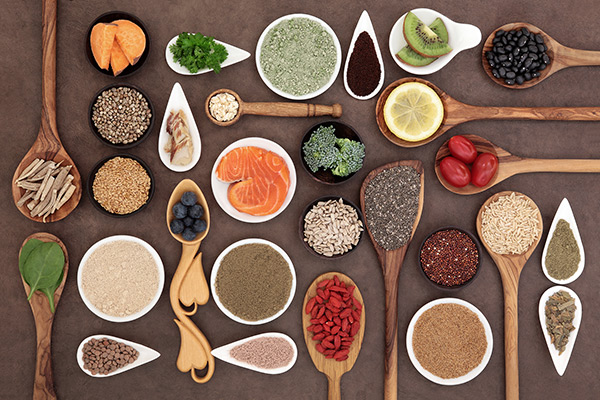
It´s never enough to reaffirm that our view of medicine is not limited to managing the symptoms of a disease.
Medical practice has been demonstrating more and more the importance of treating the disease comprehensively, taking into account the subjective view with which each patient perceives and relates to their own state. In other words, with their quality of life.
The World Health Organization (WHO) defined quality of life as the individual’s perception of their insertion in life, in the context of the culture and value systems in which they live and in relation to their goals, expectations, standards and concerns.
Within this perspective, the disease must be seen first from the patient’s perception, and the treatment must be centered on the person and not on the disease. In addition, beliefs, values and even spiritual concerns must be taken into account.
When we look at health from the quality of life perspective, we conclude that even though Medical Cannabis still has a long way to go, it already occupies a very important position in improving the routine of people suffering from chronic diseases.
One of the best examples of how to promote quality of life using cannabis is the reduction of nausea, vomiting and other side effects associated with chemotherapy.
It´s also important to mention the group of refractory epilepsies; cannabis has proven to have an anticonvulsant effect, and reduces drastically the number and duration of seizures and of the medications with the same purpose, reducing drug interactions and important side effects associated with the use of these substances.
Studies with groups of patients that suffer from chronic pain indicate that after using medical cannabis there was a spectacular reduction in the use of opiates, anti-inflammatories, anti-rheumatics, antidepressants and others.
Research among patients in countries where medical cannabis has been regulated show that a significant number of patients have switched their prescription drugs to cannabis.
In America, in some states that have regulated medical cannabis, there was a reduction in the number of deaths from opioid overdose in recent years, compared to other states where it is still banned.
Much remains to be learned regarding the effects of medical cannabis on health-related quality of life. This is a field in which the work has only recently started to spread and not all studies are fully conclusive.
The good news is that these studies also indicate that medical cannabis is making a clear contribution in reducing the use of other medications. By bringing direct benefits to health as a whole, it allows the disease to be endured with dignity and for treatment to go beyond symptom control; and that isquality of life.
References:
- A list of all the studies published to date can be found at: http://www.cannabis-med.org/index.php?tpl=page&id=37&lng=es
- Whiting PF, Wolff RF, Deshpande S, Di Nisio M, Duffy S, Hernandez AV, Keurentjes JC, Lang S, Misso K, Ryder S, Schmidlkofer S, Westwood M, Kleijnen J. 2015. Cannabinoids for Medicinal Use: A Systematic Review and Meta-analysis. JAMA. 313(24):2456-73.
- Saccà F, Pane C, Carotenuto A, Massarelli M, Lanzillo R, Florio EB, Brescia Morra V. 2016. The use of medical-grade cannabis in patients non-responders to Nabiximols. J Neurol Sci. 368:349-51.
- Russo EB. 2011. Taming THC: potential cannabis synergy and phytocannabinoid-terpenoid entourage effects. Br J Pharmacol. 163(7):1344-64.
- Doris A, Byron H. 2005. Construcción cultural del concepto calidad de vida. Revista Facultad Nacional de Salud Pública [online]. http://www.scielo.org.co/scielo.php?script=sci_arttext&pid=S0120-386X2005000100008
- Grotenhermen F. 2008. Cannabis como medicamento. Barcelona: Cáñamo Ediciones, pg. 111.
- Elliott DA, Nabavizadeh N, Romer JL, Chen Y, Holland JM. 2016. Medical marijuana use in head and neck squamous cell carcinoma patients treated with radiotherapy. Support Care Cancer. 24(8):3517-24.
- Corroon JM Jr, Mischley LK, Sexton M. 2017. Cannabis as a substitute for prescription drugs – a cross-sectional study. J Pain Res. 10:989-998.
- Boehnke KF, Litinas E, Clauw DJ. 2016. Medical Cannabis Use Is Associated With Decreased Opiate Medication Use in a Retrospective Cross-Sectional Survey of Patients With Chronic Pain. J Pain. 17(6):739-44.
- Piper BJ, DeKeuster RM, Beals ML, Cobb CM, Burchman CA, Perkinson L, Lynn ST, Nichols SD, Abess AT. 2017. Substitution of medical cannabis for pharmaceutical agents for pain, anxiety, and sleep. J Psychopharmacol. 31(5):569-575.
- Numerous survey-based studies have been published showing a reduction in the use of prescriptions drugs among cannabis users in American and Canadian dispensaries. For example: Reinarman C, Nunberg H, Lanthier F, Heddleston T. 2011. Who are medical marijuana patients? Population characteristics from nine California assessment clinics. J Psychoactive Drugs. 43(2):128-35. exemplo: Reinarman C, Nunberg H, Lanthier F, Heddleston T. 2011. Who are medical marijuana patients? Population characteristics from nine California assessment clinics. J Psychoactive Drugs. 43(2):128-35.
- Bachhuber MA, Saloner B, Cunningham CO, Barry CL. 2014. Medical cannabis laws and opioid analgesic overdose mortality in the United States, 1999-2010. JAMA Intern Med. 174(10):1668-73.
- Fiz J, Durán M, Capellà D, Carbonell J, Farré M. 2011. Cannabis use in patients with fibromyalgia: effect on symptoms relief and health-related quality of life. PLoS One. 6(4):e18440.
- Haroutounian S1, Ratz Y, Ginosar Y, Furmanov K, Saifi F, Meidan R, Davidson E. 2016. The Effect of medical cannabis on Pain and Quality-of-Life Outcomes in Chronic Pain: A Prospective Open-label Study. Clin J Pain. 32(12):1036-1043.
- Goldenberg M, Reid MW, IsHak WW, Danovitch I. 2017. The impact of cannabis and cannabinoids for medical conditions on health-related quality of life: A systematic review and meta-analysis. Drug Alcohol Depend. 174:80-90.


